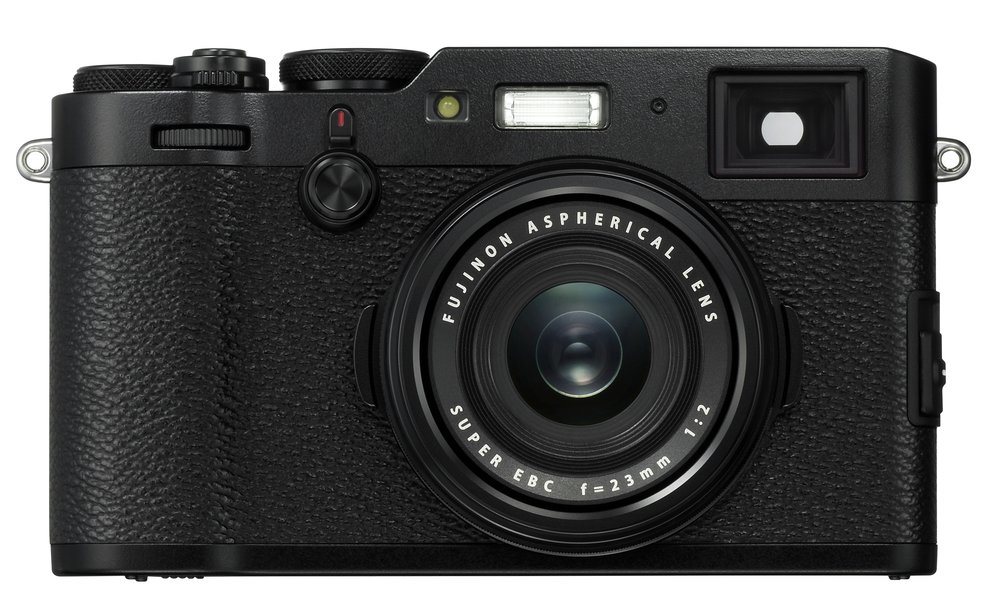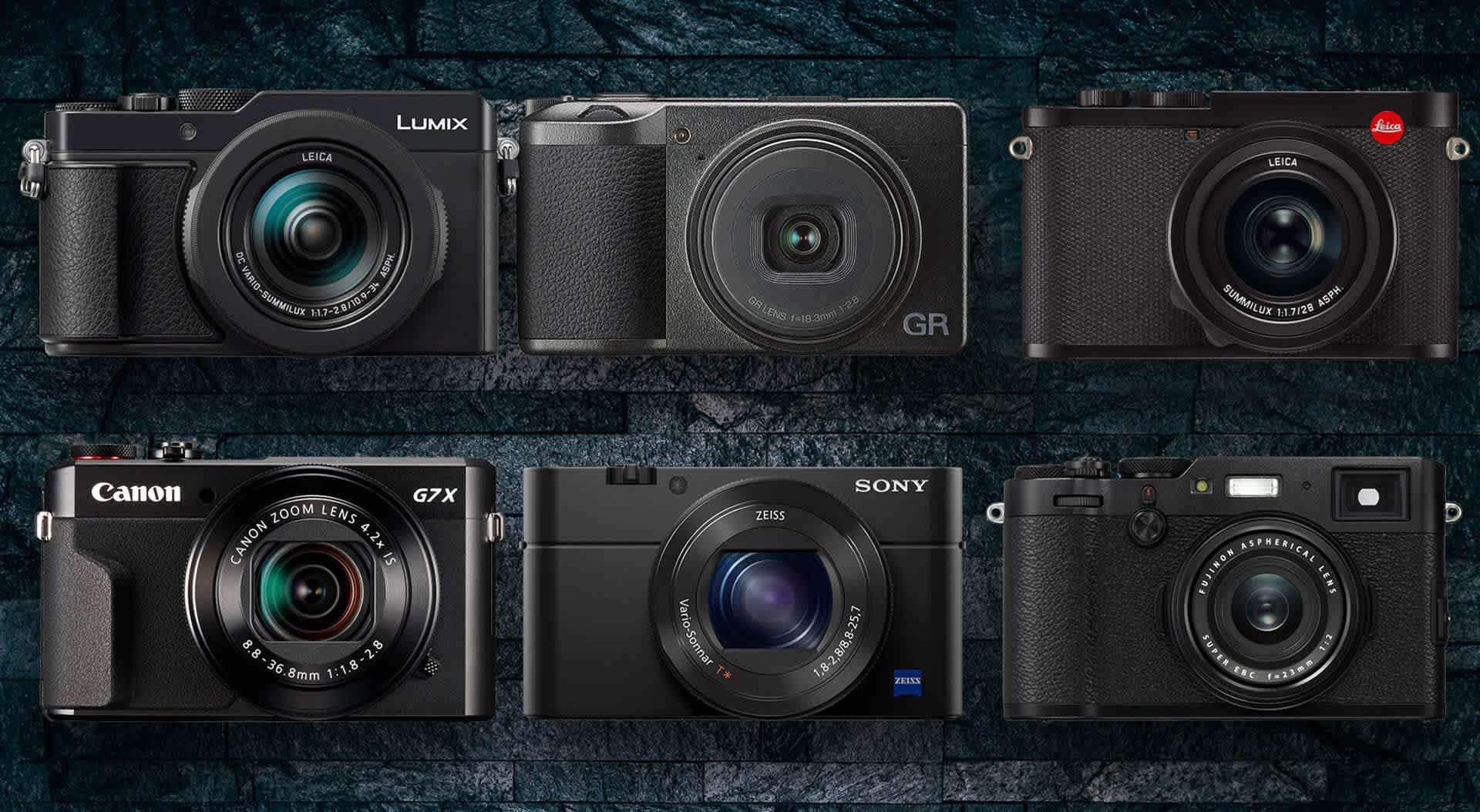What is the ideal carry-anywhere travel camera? We’ve discussed this endlessly here on Macfilos. Roger Payne at DigitalRev has looked at the current market. A

This is Roger’s pick of current cameras on the market which make ideal travel companions:
- Lumix LX100 Mk II (Leica D-Lux 7)
- Ricoh GR III
- Leica Q2
- Canon G7X Mk II
- Sony RX100 IV
- Fuji X100F

I can’t quibble with any of these choices. Any these cameras would do you proud, although if you consider defunct stock, I’d add the Leica X1/2 to the list. Despite their age (2010 and 2012) they are still the finest example of the simple approach, capturing excellent shots with the minimum of hassle.

Three of Roger’s chosen cameras (Lumix, Canon and Sony) offer a variety of focal lengths. If a zoom lens is essential, look no further. For ultimate portability, I’d take the Sony, despite it having the smallest sensor here.

For fixed-lens fans, though, there are two APS-C models (Ricoh, Fuji) and one full-frame camera in the form of the Q2 to choose from. This latest addition, with its 47MP sensor, offers an intro into both worlds — the simplicity of fixed lens with the flexibility of really acceptable digital zooming up to a 50mm equivalent — and even 75mm in emergency.

The Q2, unfortunately, isn’t as compact as the rest of the bunch and, while it makes an ideal travel camera, it isn’t the pocket device that many people prefer. The Ricoh or Sony are the two prime choices if you want to travel really light.

There’s one factor I haven’t mentioned and that’s price. The Canon is the cheapest of the six and a very attractive camera that does an excellent job for the money.
Of this bunch, I have personal experience of the Fuji, the Lumix (Leica D-Lux), the Q2, the Sony and the Ricoh. All great cameras It’s only the Canon I haven’t tried, but it is certainly worth considering on a value play.

The Q2, inevitably, is the most expensive and, for many, will be ruled out on that score alone. From the Canon at £500 to the Leica at £4,250 there’s quite a jump. Interestingly, though, five of these cameras cost less than £1,000. The Q2 is definitely the odd one out, however good it is.



I’d throw the Fuji XF10 into the mix too, if you’re happy with a 28mm fixed lens. Especially for pocketable travel, if you want lovely JPEGs then the 24mp Fuji sensor is a good option. No viewfinder of course.
I have tried 3 cameras as travel cameras, the ricoh gr of course which is amazing in IQ with a bit of post processing which I’ve used a lot as most of you know by now, the X2, a bit bulkier but an amazing camera with better IQ than the ricoh in my opinion and the ricoh grd4 (that I acquired for almost nothing recently). As for choosing on long distance trips I tend to pick up the ricoh cameras, same batteries for both and the convenient 28 mm lens and in Europe I favor the X2 but sometimes miss the 28mm field of view. I guess a leica CL would probably be the answer.
Jean
Leica CL is my travel camera of choice. Small, light, every feature you need, great image quality, and it is light and relatively small. For that matter, could probably add a Sony A6xxx for grins as well. I guess travel has to mean fixed lens?
Not for us it seems! 🙂
Rüdiger, see my reply to Steve. You are right in relation to this six-pack — they were all fixed-lens cameras. But the CL would certainly be added if it were eligible.
Well I’m mystified as to why the Leica CL isn’t here.We are talking about ‘travel’ cameras, right?. An awful lot of travel photos are taken in bright sunlight. Trust me..for a travel camera you NEED a good built in finder. and the CL has got that ( The Ricoh doesn’t ) and with the pancake wide lens it’s much smaller than a Q. Even with the 18-56 it’s a compact package. No doubt the Q2 is lovely but for a compact and more versatile ( stick any lens you like on it) travel camera I think the CL’s a winner. In the days of film i roamed S.E. Asia with a Contax T2 ( still got it) then a Ricoh GR original. CL would easily be my choice today. Of course any of the cameras listed could also do a great job.We are spoilt for choice! If Ricoh hadn’t dropped the finder when they made the GR digital I’d be rushing to the store to get my hands on one. Biggest mistake they made. I mean, who really wants a stick on finder?
Steve
Strange you should bring this up. It occurred to me when writing the article and I completely agree with your comments. The CL has the footprint of a Barnack Leica and brings the versatility of lenses. The 18-56 is superb, as you say, and is probably the only lens you need for travel. The pancake, too, makes the CL almost pocketable.
I did almost make this point but then I realised that the choice was based on fixed-lens cameras and the CL would be the odd one out. But it is a valid contender in a more general assessment and you have promoted me to write an article.
I agree with you on viewfinders and, if truth were known, this is the reason I don’t use the Ricoh much these days. I also have both the X1 and X2 but prefer the X2 with EVF for much the same reasons. But then it is not as compact overall as the CL with the pancake.
We can only wish for the CL2 ( some way off ) to come with X style aperture and shutter speed dials! Mind you, then it would be an X3 or a Q2 mini!
All things considered, as far as Leica are concerned, I can’t think of any other time when they’ve had such a strong line-up. Something for everyone including those that want to stick with rangefinders.
I really enjoy taking my silver Leica Q with me. Often I use the button on the back to bring up the 35mm and 50mm frame lines for more accurate composure. The images from those shots are amazing with the full frame sensor. The Q is very well balanced, battery life is longer than I’ve ever needed; and the Q camera just oozes that Leica quality and mystique when out and about casual shooting; making the photography experience even better.
I’ve been using my the new Q2 (I wish it were silver) a lot since it arrived and I appreciate the cropping. However, I tire of fiddling with the frame lines, particularly since you don’t get a magnified image to help with composition. Last weekend I just left it on 28mm but bore in mind I could crop effectively. That worked well. The frame lines do have a purpose in composition, especially in forcing optimum framing for a portrait. There’s always a tendency to stand too close to the subject with the 28mm lines and that isn’t ideal. Whether you use the lines or not, they are there when needed and provide help with composing. They look good too and, I am sure they are effective in selling the cropping concept to buyers.
Of course, ignore all this is you are shooting jpg only. In that case it’s a good idea to use the frame lines as much as possible. With RAW, the rest of the frame is always there if you get it wrong.
Personal choice is short zoom for travel.
Leica C Typ 112 for a truly compact zoom. Very good output, and it fits in a shirt pocket.
Or a Fuji X20 for excellent output from a great value retro zoom.
So many options. No real need for the latest and greatest for travel. Quality problem.
I still love my X tip 113 as my go to light weight walkabout camera, and reckon a few on here will list the X and X2 as their favourite.
I have been a Leica fan since the early days of my D-Lux 4 and V-Lux 1. But I have to admit, I have found the Sony RX100 (only Mk 3) amazingly convincing in size and IQ. I also have the a6000 which certainly encourages me to upgrade to the IS a6500 – and these are conveniently small cameras with movable LCDs.